News Archive
Filter By
- Abyssinian ground hornbill
- Addax
- Aldabra tortoise
- Allen's swamp monkey
- Alpaca
- American alligator
- American avocet
- American bison
- American flamingo
- American wigeon
- Andean bear
- Aquatic caecilian
- Arapaima
- Asian elephant
- Asian small-clawed otter
- Asian water dragon
- Australian snake-necked turtle
- Bald eagle
- Baltimore oriole
- Barred owl
- Beaver
- Bennett's wallaby
- Binturong
- Black-and-white ruffed lemur
- Black-and-white warbler
- Black-crowned night heron
- Black-footed ferret
- Black-tailed prairie dog
- Black-throated blue warbler
- Blue-billed curassow
- Blue crane
- Bobcat
- Brown pelican
- Bufflehead
- California sea lion
- Canvasback
- Cedar waxwing
- Channel catfish
- Cheetah
- Chicken
- Chinese alligator
- Chinese three-striped box turtle
- Clouded leopard
- Collared brown lemur
- Common raven
- Common yellowthroat
- Corals and sea anemones (anthozoa)
- Cow
- Crocodile monitor
- Cuban crocodile
- Dama gazelle
- Degu
- Dunlin
- Eastern indigo snake
- Eastern newt
- Eastern red-backed salamander
- Eastern screech-owl
- Eld's deer
- Electric eel
- Emperor newt
- Emperor tamarin
- Fennec fox
- Fishing cat
- Gaboon viper
- Geoffroy's marmoset
- Gharial
- Giant leaf-tailed gecko
- Giant panda
- Goat
- Golden-headed lion tamarin
- Golden lion tamarin
- Gray seal
- Gray wolf
- Green tree python
- Grevy's zebra
- Guam kingfisher (sihek)
- Guam rail (ko’ko’)
- Guinea pig
- Harbor seal
- Hartmann's mountain zebra
- Hawk-headed parrot
- Hellbender
- Home's hinge-back tortoise
- Hooded crane
- Iranian fat-tailed gecko
- Japanese giant salamander
- King vulture
- Komodo dragon
- Kori bustard
- Kunekune pig
- Land hermit crab
- Larger Malay mouse-deer
- Lemur leaf frog
- Lesser kudu
- Lesser Madagascar hedgehog tenrec
- Linné's two-toed sloth
- Lion
- Loggerhead shrike
- Long-tailed chinchilla
- Maned wolf
- Meerkat
- Miniature donkey
- Naked mole-rat
- North American porcupine
- North American river otter
- Northern Luzon giant cloud rat
- Northern pintail
- Northern red salamander
- Northern snakehead fish
- Northern tree shrew
- North Island brown kiwi
- Norway rat
- Orangutan
- Orchard oriole
- Ossabaw Island hog
- Ostrich
- Ovenbird
- Pallas's cat
- Panamanian golden frog
- Patagonian mara
- Persian onager
- Philippine crocodile
- Prehensile-tailed porcupine
- Prevost's squirrel
- Przewalski's horse
- Pygmy slow loris
- Red-crowned crane
- Red-fronted lemur
- Red-rumped agouti
- Red-winged blackbird
- Red knot
- Red panda
- Red River hog
- Red ruffed lemur
- Red wolf
- Ring-tailed lemur
- Ruddy duck
- Schmidt's red-tailed monkey
- Scimitar-horned oryx
- Screaming hairy armadillo
- Semipalmated plover
- Semipalmated sandpiper
- Siamang
- Sitatunga
- Sloth bear
- Southern lesser galago
- Southern swamp sparrow
- Southern tamandua
- Spider tortoise
- Striped skunk
- Swainson's thrush
- Tanagers
- Tentacled snake
- Tiger
- Titi monkey
- Turkey
- Twig catfish
- Vietnamese mossy frog
- Virginia opossum
- Von der Decken's hornbill
- Western lowland gorilla
- White-cheeked gibbon
- White-faced saki
- White-naped crane
- White-nosed coati
- Whooping crane
- Yellow-breasted chat
Displaying 1076 - 1100 of 2351 articles.
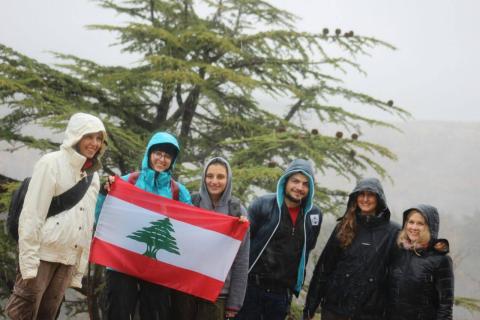
Bringing DNA Metabarcoding to Lebanon's Cedar Forests
Lebanon’s majestic cedar forests are the country's national symbol. Yet the famous forests and the animals that live there have declined precipitously as the result of logging, invasive species, human encroachment and hunting. Smithsonian Conservation Biology Institute’s (SCBI) Center for...

What’s in the Zoo’s Toy Box?
Elephants playfully roll in sand dunes. Sloth bears lounge in hammocks, woven by keepers. Giant pandas gobble up birthday cakes garnished with their favorite foods. Enriching toys, environments, foods and experiences abound at the Smithsonian’s National Zoo as part of the Animal Enrichment and...
Elderly Two-toed Sloth Dies at Smithsonian's National Zoo
Ms. Chips, a two-toed sloth and longtime resident of the Smithsonian’s National Zoo, died overnight Jan. 2. She was 46 years old. The median life expectancy for female two-toed sloths in human care is 15 years old.
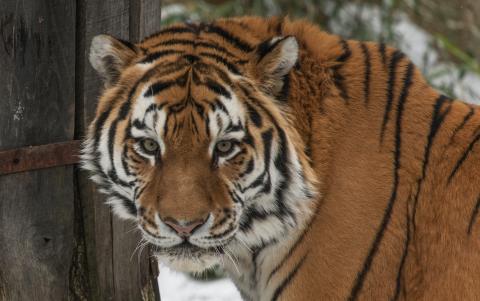
New At the Zoo: Amur Tiger
There’s a new tiger in town! Meet Pavel, a 10-year-old Amur tiger who lives at the Smithsonian’s National Zoo’s Great Cats habitat. He made his debut this week and is the first of his endangered species to be on exhibit here in 70 years. In this Q&A, get the scoop on Pavel from Great Cats curator...
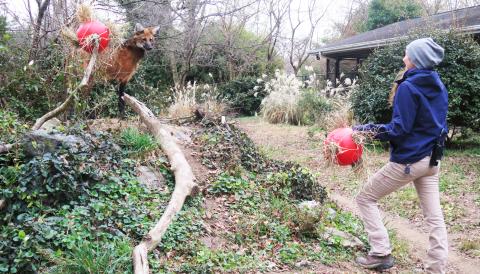
A Day in the Life of a Cheetah Conservation Station Keeper
Some of the most endangered species on the planet can be found at the Smithsonian’s National Zoo’s Cheetah Conservation Station. Get a glimpse behind-the-scenes at a day in the life of keepers who work with animals, ranging from the graceful dama gazelle to the speedy cheetah, from assistant curator...
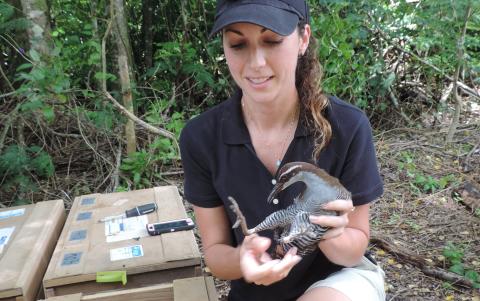
Homeward Bound: Guam Rails
Guam rails are classified as extinct in the wild by the International Union for Conservation of Nature, but staff at the Smithsonian Conservation Biology Institute (SCBI) and partners are working to change the birds’ fate. Last September, SCBI deputy director Will Pitt and animal keeper Erica Royer...
New Amur Tiger Debuts at the Smithsonian’s National Zoo
For the first time since 1948, the Great Cats habitat at the Smithsonian’s National Zoo is once again home to an Amur tiger, a 10-year-old male named Pavel.
Hartmann’s Mountain Zebra Dies at the Smithsonian Conservation Biology Institute
Hoofstock keepers at the Smithsonian Conservation Biology Institute are mourning the loss of Yvonne, a 15-year-old female Hartmann’s mountain zebra who was humanely euthanized Dec. 31, 2017. The median life expectancy for a female of this species is 15 years.
New Cheetahs Debut at the Smithsonian’s National Zoo
There is a brand new band of brothers at the Smithsonian’s National Zoo. A coalition of two male cheetahs made their debut at the Cheetah Conservation Station yesterday, Dec. 21.
Latest Pangolin Family Tree Provides Key To Tracking World’s Most Trafficked Mammal
A new study from the Smithsonian and partners presents the most comprehensive evolutionary family tree for the eight known species of pangolins—one of Earth's most evolutionarily unique animals and the world's most trafficked mammal.
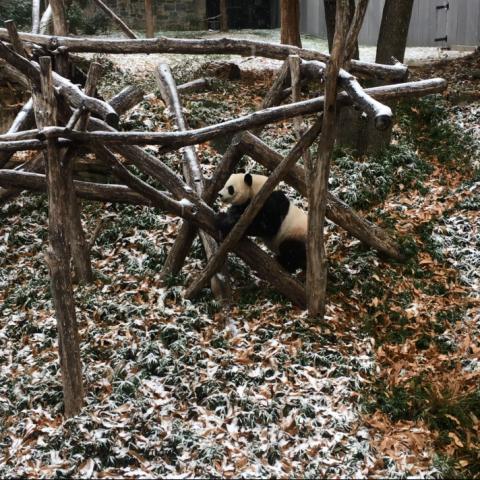
Giant Pandas in Winter
As the days get shorter and the weather gets cooler, the pandas are spending more time in their yards. Panda keepers sometimes get asked by the visitors why we place the bamboo and enrichment items in the places that we do when we set up the yards.
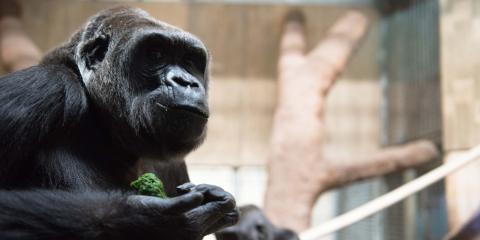
#GorillaStory: Morning Sickness and Eating for Two
Western lowland gorilla Calaya recently entered her second trimester of pregnancy. Just like other members of the great ape family—including humans—gorillas experience weight gain, and some experience bouts of morning sickness.
Smithsonian Scientists Identify Early Indicators of Pregnancy in Cheetahs
A new study from the Smithsonian Conservation Biology Institute is helping to make headway in an area of animal management that has historically proven challenging: the breeding of cheetahs under human care.

GRUMP Holiday Market at the Smithsonian’s National Zoo
ZooLights visitors will have the opportunity to attend GRUMP, a European-style outdoor market, Dec. 15, 16 and 17 from 5 p.m. to 9 p.m.
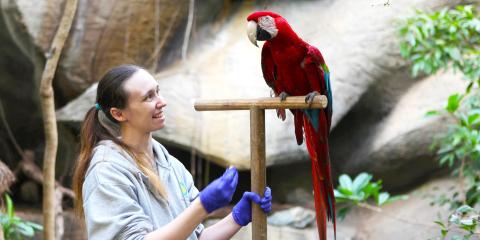
A Day in the Life of a Bird House Keeper
Caring for many bird species—from the itty bitty indigo bunting to the giant greater rhea—is all in a day’s work for Bird House keepers at the Smithsonian’s National Zoo. Although renovations to transform the building into the brand new Experience Migration exhibit are well underway, keepers are...

New at the Zoo: Meet Andean Bear Quito
Next week, 4-year-old male Andean bear Quito will make his debut at the Smithsonian’s National Zoo! Get the scoop on the new guy in town from animal keeper Sara Colandrea and assistant curator Leigh Pitsko.
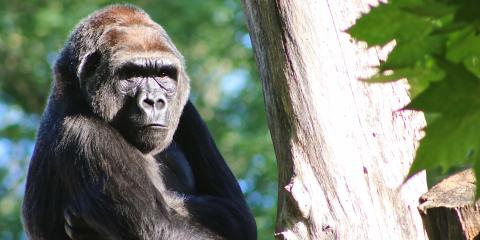
#GorillaStory: Communicating with Calaya
When western lowland gorilla Calaya first arrived at the Zoo, she was unfamiliar with many husbandry behaviors. Then, one Day, animal keeper Melba Brown had an 'aha' moment. She noticed that Calaya would often watch other gorillas interact with keepers.
Two Guam Rail Chicks Hatch at the Smithsonian Conservation Biology Institute
The Smithsonian Conservation Biology Institute hatched two Guam rail chicks earlier this month. The hatchings are a boon for the species, which is currently classified as “extinct in the wild” by the International Union for Conservation of Nature ( IUCN), although there are small populations that...

Bei Bei Update: November 2017
Bei Bei started showing signs of abdominal discomfort overnight Saturday, Nov. 25. As a result, the panda team began monitoring him closely. He passed a mucous stool on Sunday, Nov. 26, and began eating and defecating normally again. As of Wednesday, Nov. 29, Bei Bei is bright, alert and fully...
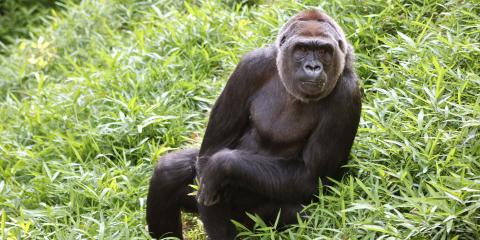
Gorilla Matchmaking
Excitement abounds at the Great Ape House as animal keepers prepare western lowland gorilla Calaya for motherhood. Even before she arrived at the Smithsonian’s National Zoo in 2015, the Association of Zoos and Aquariums Species Survival Plan coordinators were matchmaking Calaya with male silverback...

Smithsonian Scientists Develop Free Tool to Improve Understanding of Migratory Connectivity
With a new statistical tool from the Smithsonian Migratory Bird Center, researchers can take data and better understand the strength of migratory connectivity—whether and when populations spread out or stay together in different seasons of the year—in a quantitative way.

Zygmund is Introduced to Female Przewalski's Horse Herd
The Smithsonian Conservation Biology Institute's Przewalksi's horse colt Zygmund (or “Ziggy” as keepers affectionately refer to him) is growing into a powerful stallion.
Leadership Change at Smithsonian's National Zoo and Conservation Biology Institute
Smithsonian’s National Zoo and Conservation Biology Institute Director Dennis Kelly plans to retire after a temporary appointment as the interim president of Smithsonian Enterprises. Effective Monday, Nov. 27, 2017, Steven Monfort will become acting director of the Smithsonian's National Zoo and...
Smithsonian’s National Zoo To Host CulturalDC’s SPACE4: Visual Arts Initiative, Washington, D.C.’s First Mobile Art Gallery
The Smithsonian’s National Zoo, in collaboration with CulturalDC, will host Washington, D.C.’s first mobile art gallery during ZooLights, powered by Pepco, the Zoo’s annual free holiday lights festival from Nov. 24 through Jan. 1 (except Dec. 24, 25 and 31).
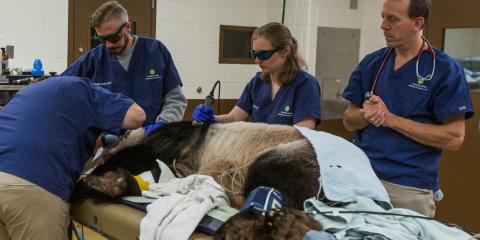
Tian Tian Gets a Full Veterinary Checkup
Tian Tian had a preventative health exam yesterday. He was taken to the veterinary hospital, which allowed our veterinarians to get an up-close and in-depth look at him while he was under anesthesia.
